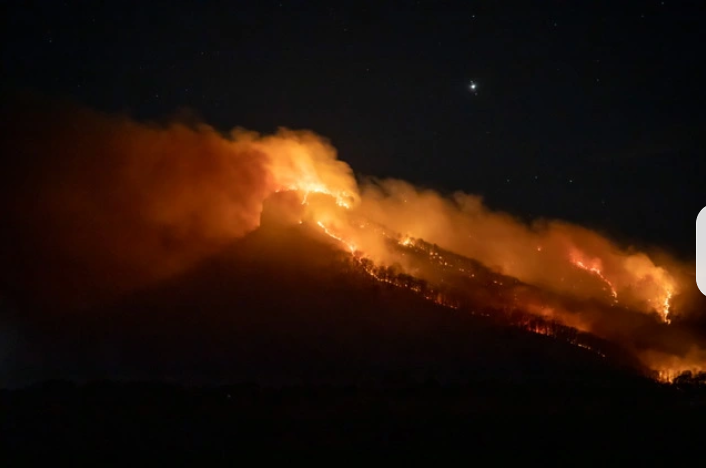Over 1,000 acres burn in Pilot Mountain wildfire
Just 20 miles northwest of Winston Salem, Pilot Mountain serves as one of the most distinctive geographical features of North Carolina. This pristine state parkland, however, has been left deeply scarred by a widespread wildfire dubbed the Grindstone Fire for its origin near the park’s Grindstone Trail.
The blaze, first reported on November 20, had spread across over 100 acres less than a day after it ignited, prompting a closure of Pilot Mountain State Park. The Grindstone Fire has since scorched over 1,000 acres of forested land, making the Grindstone Fire the largest wildfire of its kind since 2012; however, no property damage, deaths, or injuries have been reported as a result of the flames. After two weeks of hard work, firefighters were able to contain 100 percent of the Grindstone fire on December 4th.
According to the North Carolina Forest Service, the Grindstone Fire was sparked by a poorly managed campfire in an undesignated area of the park. Poor weather conditions also played a role in the fire’s spread. Fall is North Carolina’s wildfire season, with dry conditions leaving plants more susceptible to fires. These adverse conditions have led North Carolina to impose a burn ban, heavily discouraging the personal use of fires. “Our top priority is always to protect lives, property and forestland across the state,” Agriculture Commissioner Steve Troxler told WXII-TV.
Despite the tragedy which wildfires like this entail, there is an ecological silver lining to such events. Fires have been a part of North Carolina’s ecosystem for generations, and many native plants are well adapted to frequent wildfires. According to Professor Lauren Lowman of Elon University, who studies the impact of fire on ecosystems, “Fires are important to maintaining what is this regular cycle of which plants are there and thriving and which get killed off and allowed to regrow later. Fire plays a really important role in governing that process,” For example, wildfires bring down many large trees, allowing sun to reach the forest floor more easily. As a result, wildfires like the Grindstone Fire provide an opportunity for new saplings, low-growing plants, and even wildflowers to grow.





